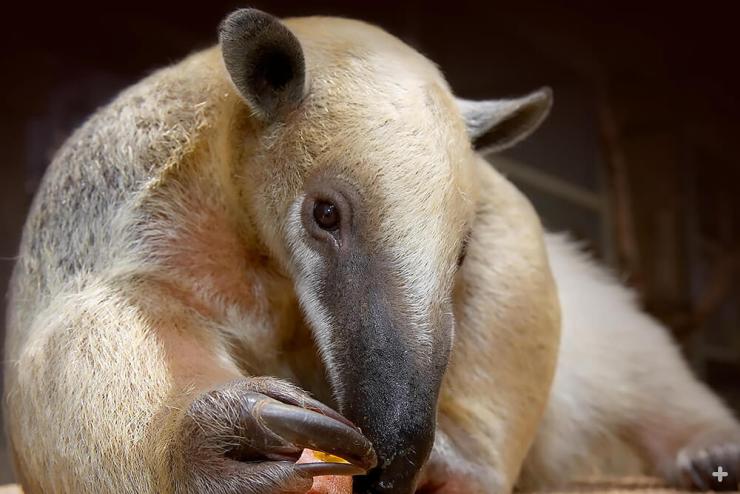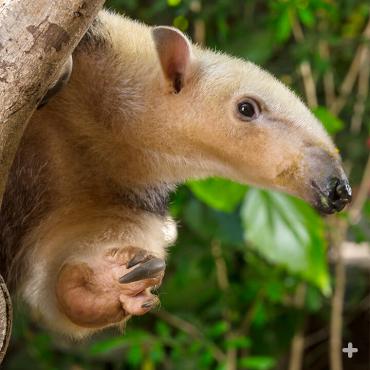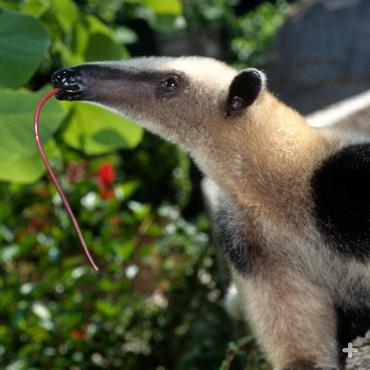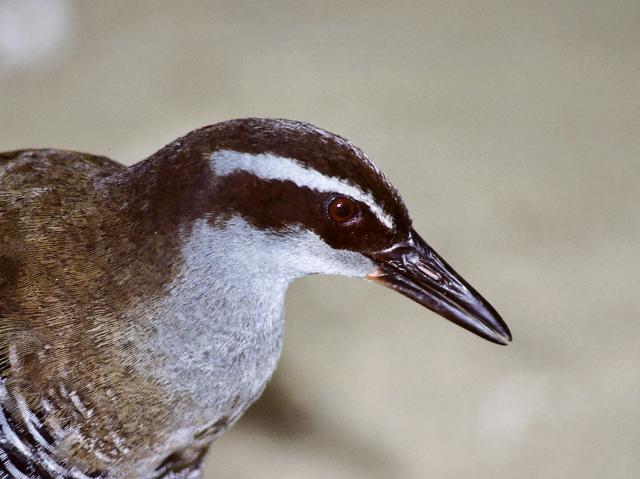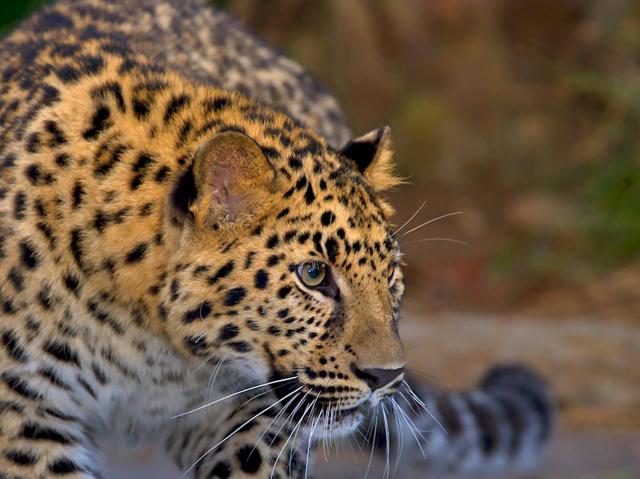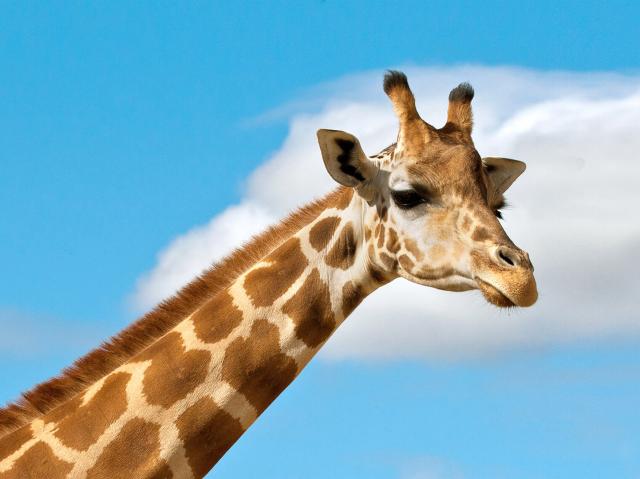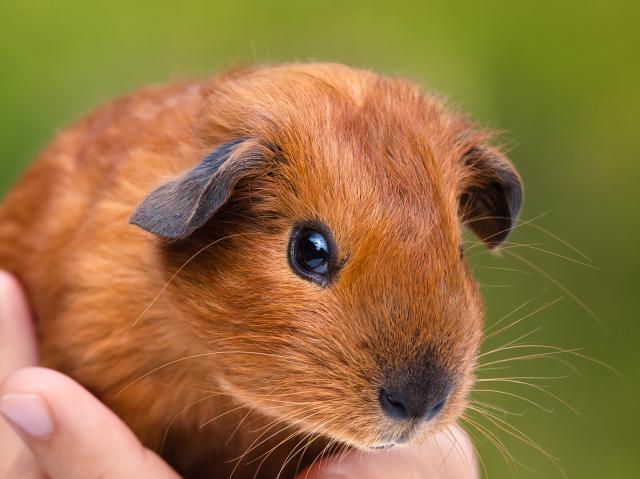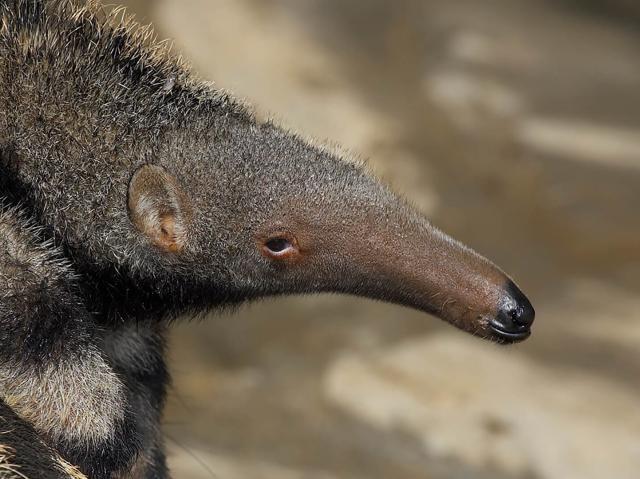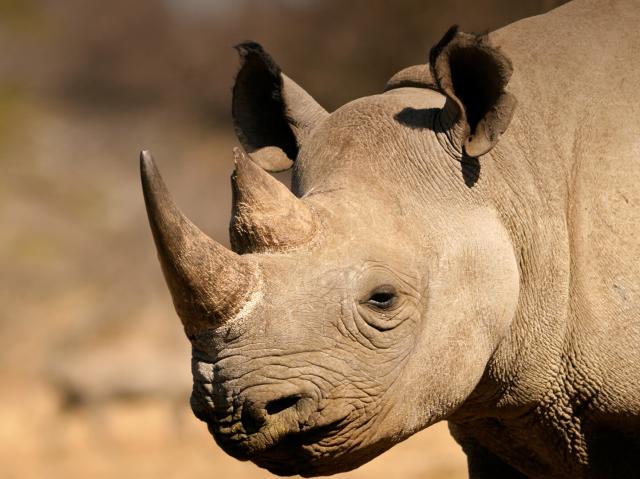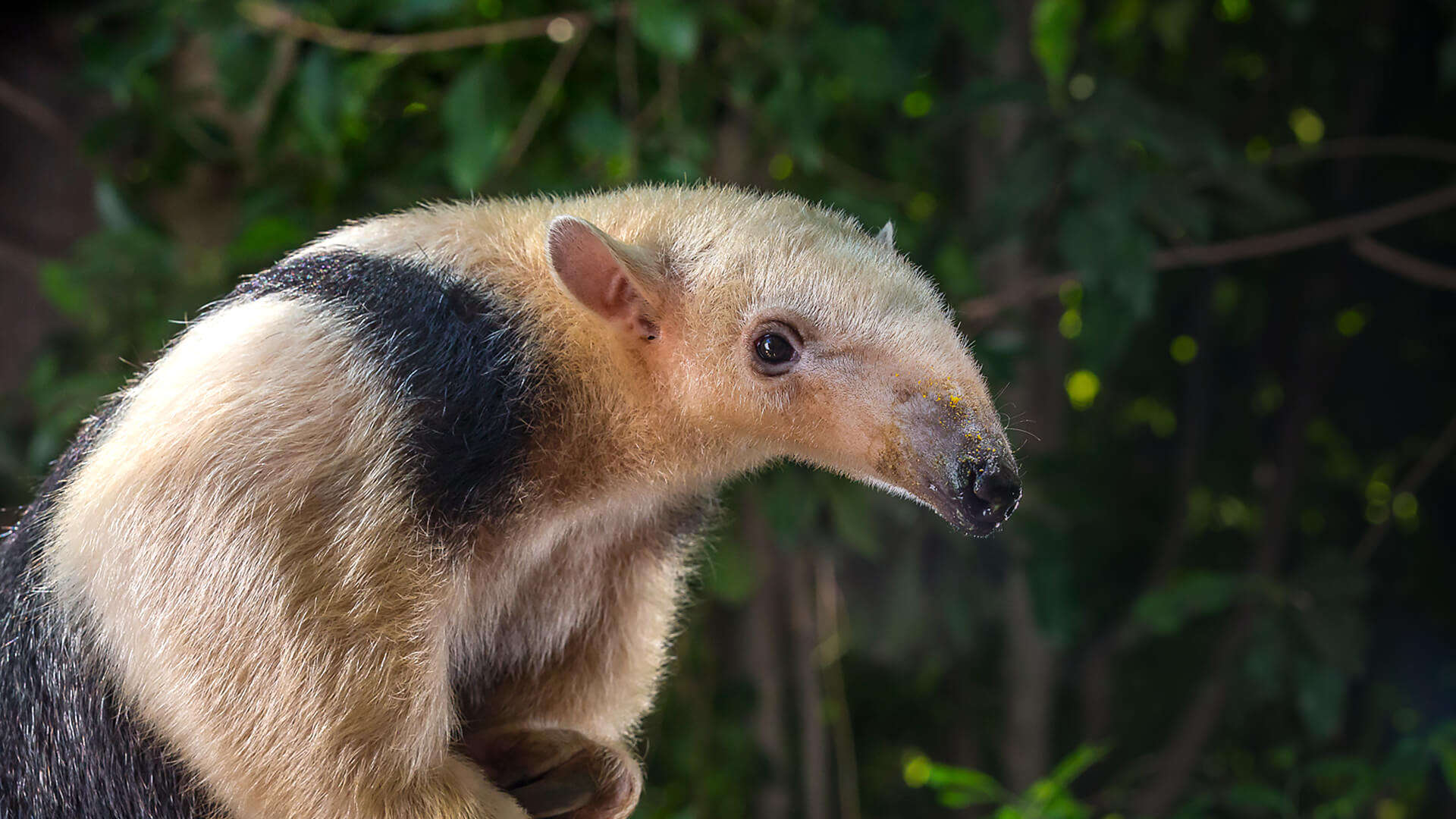
Tamandua or Lesser Anteater

- CLASS: Mammalia (Mammals)
- ORDER: Pilosa
- FAMILY: Myremecophagidae
- GENUS: Tamandua
- SPECIES: tetradactyla (southern tamandua) and mexicana (northern tamandua)

ABOUT
As a type of anteater, tamanduas (pronounced tuh MAN doo wah) are often called lesser anteaters because they are much smaller than their relatives, giant anteaters. They also have shorter fur and shorter muzzles than giant anteaters. Tamanduas live both in trees and on the ground, using a prehensile tail to grip tree branches. They are most active at night, often nesting during the day in hollow tree trunks. They have small eyes and poor vision, but can hear and smell quite well.
Several potential predators—jaguars and smaller cats like margays—would love to make a meal out of a tamandua if it weren't so stinky! A strong odor alerts other wildlife to their location and usually sends them in the opposite direction. If a predator does get too close, a tamandua may hiss and then release a very sharp odor, similar to a skunk's, from a gland at the base of its tail.
A tamandua's can use its powerful forearms and claws for defense. If it feels threatened while in a tree, a tamandua can hold onto a branch with its hind feet and tail so its arms and long claws are free to fight.
HABITAT AND DIET
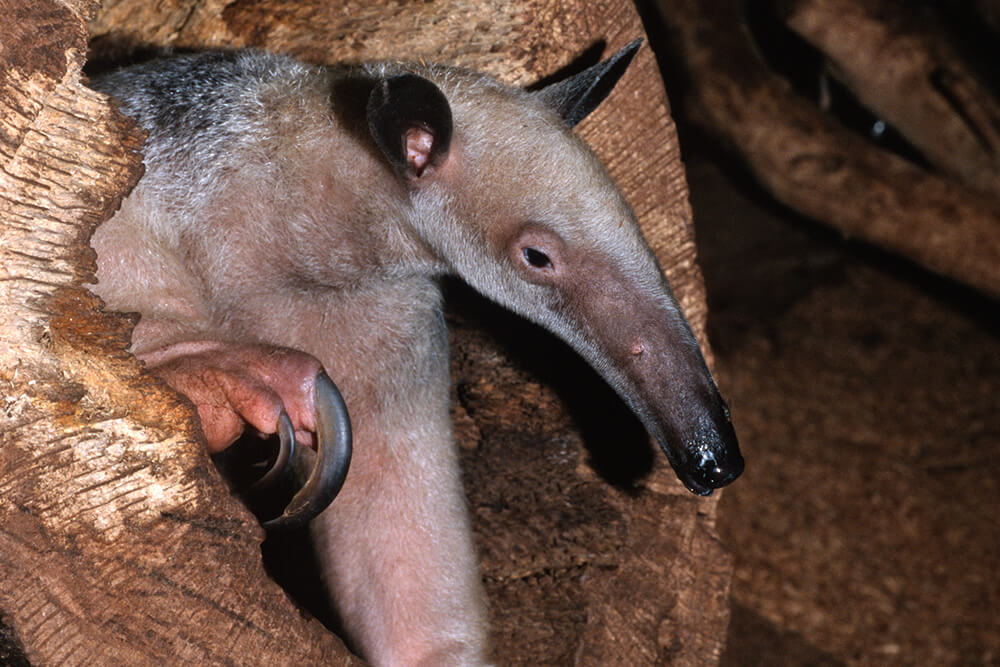
A tamandua’s unique adaptations work to its advantage in its Central and South American forest and scrub habitat. They have thick, coarse fur that is light yellow, tan, brown, or gray. The thick hair keeps angry ants from reaching their skin when dining at an anthill.
Many also have a large, black band covering the sides of their body or a black "V" going down their back. Their enormous front claws help them climb. They have four toes on their front feet, with an extra-long claw on the third toe. These important claws are used for defense and when digging for food. They also cause tamanduas to walk on the outside edges of their front feet so the claws don't dig into their feet!
A tamandua's prehensile tail comes in handy for spending time in the trees. The underside and end of the tail are hairless, so a tamandua can use it like an extra hand or foot while climbing. Tamanduas also use their tail for balance. They can even use them like a tripod when needing to stand upright to slash out with their sharp, curved claws. The thick tail also makes a great pillow when sleeping.
A specialized mouth and tongue let tamanduas eat up to 9,000 ants in a single day! Tamanduas don't have teeth to chew their food; instead, their stomach grinds the food after it is swallowed. A 16-inch-long (41 centimeters) sticky tongue with small barbs on it is just right for stealing ants and termites from their home. The tamandua's mouth opening is only as round as a pencil, but it can also lick up honey and soft, juicy fruits.
A powerful sense of smell helps a tamandua find a food source, like a termite mound. A tamandua feeds only a short time at each ant nest or termite mound so it won't get many bites. This also helps ensure there are plenty of snacks at the same location the next time!
At the San Diego Zoo and San Diego Zoo Safari Park, tamanduas eat mealworms and wax moth larvae.
FAMILY LIFE
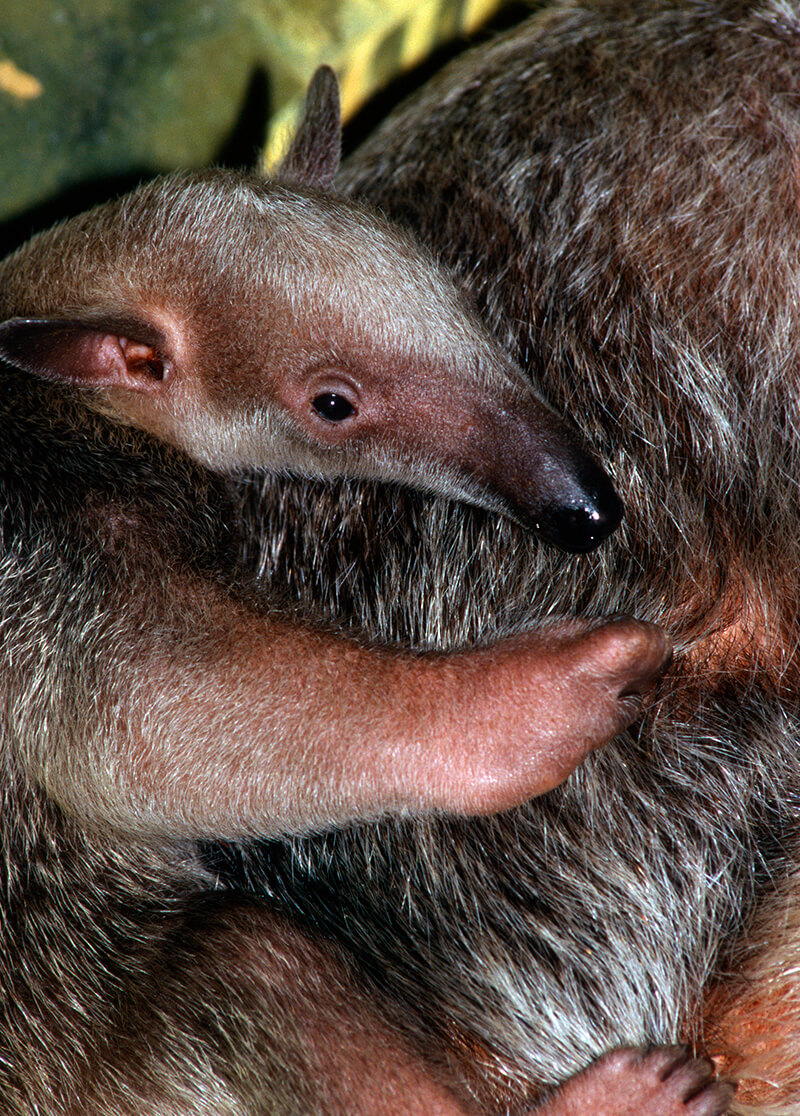
While naturally solitary most of the year, a tamandua looks for a mate in the fall. One baby, called a pup, is born in early spring and is cared for by its mother only. Pups are born with only a small amount of silky fur, but it already has giant claws. Their full coat grows in within the first few weeks. A youngster spends the first part of its life on its mother's back; she places her baby on a safe branch for a short time while she looks for food.
CONSERVATION
Both northern and southern tamanduas are classified as species of least concern, with stable populations. Fortunately, tamanduas can adapt to a variety of habitats as needed.
By joining San Diego Zoo Wildlife Alliance as an ally for wildlife, you help save species worldwide.
LIFE SPAN
9 years on average
YOUNG
Gestation: 5 months
Number of young at birth: usually one, rarely two
Weight at birth: 13.3 ounces (380 grams)
Age of maturity: 1.5 years
SIZE
Length: 1.8 to 2.9 feet (53 to 88 centimeters)
Tail length: 1.3 to 1.9 feet (40 to 59 centimeters)
Weight: 4.5 to 17 pounds (2.1 to 7.7 kilograms)
FUN FACTS
At 91 degrees Fahrenheit (33 degrees Celsius), tamanduas have one of the lowest body temperatures of any active land mammal.
Tamanduas can eat an enormous amount of ants. One tamandua's stomach was found to contain more than 1 pound (0.45 kilograms) of ants.
A smelly scent gives tamanduas the nickname "stinkers of the forest." They can spray a foul-smelling secretion said to be four times more powerful than a skunk's!
Tamanduas can distinguish between biting and stinging ants and termites. They will often try to avoid the nests of the biters in favor of more docile insects.


